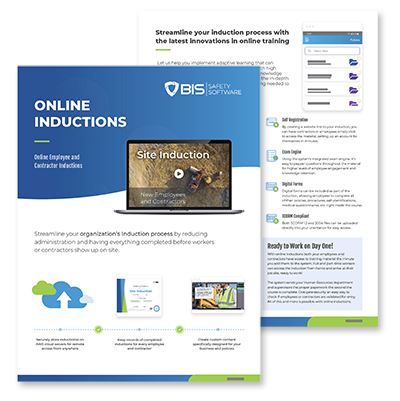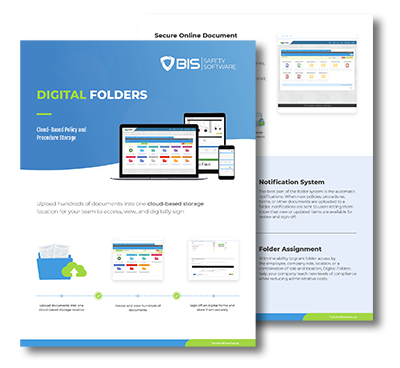Onboarding new employees is an essential process for businesses of all sizes, yet it often comes with a significant cost. From administrative work to training and lost productivity during the ramp-up period, the financial impact on a company can be considerable. In the UK, where businesses are navigating through an ever-evolving regulatory and economic landscape, managing these costs effectively can mean the difference between thriving and merely surviving. In this blog post, we’ll explore the costs associated with onboarding and discuss how software, among other methods, can help reduce these expenses, making the process more efficient and cost-effective.
Understanding Onboarding Costs
The onboarding process involves various components, including but not limited to, HR paperwork, training, mentoring, and the integration of the new employee into the company culture. While these steps are crucial for ensuring a smooth transition and long-term success, they also incur costs. Direct costs include the materials and resources needed for training, while indirect costs can stem from the time mentors or supervisors spend away from their regular tasks. Moreover, there’s the lost productivity to consider, as new hires typically take several months to reach full productivity.
The Chartered Institute of Personnel and Development (CIPD) highlights that the average cost of onboarding a new employee in the UK can be surprisingly high, especially when considering the indirect costs. This figure underscores the need for companies to seek more efficient onboarding methodologies to mitigate these expenses.
Onboarding Costs in the UK by Industry
The cost of onboarding new employees can vary significantly across different sectors within the UK. This variance is largely due to the diverse nature of roles, regulatory requirements, and training needs specific to each industry. In this chapter, we delve into the average onboarding costs by industry, supported by statistics and analysis, to provide a clearer understanding of how these expenses impact businesses across the board.
1. Technology Sector
In the fast-paced world of technology, onboarding costs can be particularly high due to the need for specialized training and access to advanced tools and software. The average onboarding cost in the tech sector can range from £1,000 to over £3,000 per employee. This is attributed to the extensive training required to ensure employees are up-to-speed with the latest technologies and company-specific systems. Additionally, the competitive nature of the tech industry often necessitates investment in continuous learning and development programs, further adding to the onboarding expenses.
2. Healthcare Sector
The healthcare sector faces unique challenges in onboarding due to stringent regulatory requirements and the critical need for comprehensive training. Onboarding costs in this sector can average between £1,500 and £5,000 per employee. This includes costs related to compliance training, certification, and the time required for new hires to attain full proficiency. The high end of this range often applies to specialized roles requiring extensive training, such as surgeons or physicians, where the implications of insufficient training are particularly severe.
3. Financial Services
The financial services sector also incurs significant onboarding costs, primarily due to the high level of regulatory compliance and risk management training required. Onboarding expenses can range from £2,000 to £4,000 per employee, with variations depending on the complexity of the role and the level of security clearance needed. Moreover, the cost of onboarding in financial services is impacted by the need for ongoing education about regulatory changes and the investment in sophisticated training programs to mitigate financial risks.
4. Retail Sector
Onboarding costs in the retail sector are generally lower, ranging from £500 to £2,000 per employee. This relatively lower cost can be attributed to the sector’s higher turnover rates and the less specialized nature of many retail positions. However, the need for customer service training, product knowledge sessions, and, increasingly, e-commerce system training can add to the overall cost of onboarding in this sector.
5. Manufacturing and Engineering
In the manufacturing and engineering sectors, onboarding costs can vary widely, typically ranging from £1,000 to £4,000 per employee. The wide range is due to the varying levels of technical skill required across different roles, from assembly line workers to engineers. Safety training and compliance are significant cost factors in these industries, where employees must be well-versed in operating machinery and adhering to health and safety regulations.

Industry-Specific Strategies to Mitigate Onboarding Costs
Understanding the specific challenges and costs associated with onboarding in each sector allows businesses to tailor their strategies to mitigate these expenses. For instance, in high-cost sectors like healthcare and technology, leveraging specialized onboarding software that offers compliance tracking and advanced training modules can be particularly beneficial. Conversely, in sectors like retail, focusing on group training sessions and leveraging peer mentoring can be more cost-effective approaches.
It’s important for businesses to not only consider the direct costs associated with onboarding but also to factor in the long-term benefits of investing in a thorough and efficient onboarding process. Effective onboarding can lead to higher employee retention rates, improved productivity, and ultimately, a more positive impact on the bottom line. By adopting industry-specific strategies and leveraging technology where applicable, businesses can optimize their onboarding processes, ensuring new hires are equipped to contribute to the company’s success as quickly and effectively as possible.
Reducing Onboarding Costs with Software
Investing in onboarding software or online induction software is one of the most effective ways to reduce these costs. These platforms can streamline the administrative aspects of the onboarding process, from digitalising paperwork to providing an organised framework for tracking the progress of new hires. By automating many of these tasks, companies can not only save on administrative costs but also ensure compliance with UK employment laws and regulations, which are critical for avoiding potential fines.
Onboarding software often includes training modules that can be customised to fit the needs of different roles within the company. This flexibility allows for a more efficient training process, as employees can learn at their own pace and refer back to the material as needed. Moreover, by using software that tracks progress, managers can identify areas where new hires may need additional support, further tailoring the training process and reducing the time it takes for an employee to become fully productive.

Other Methods to Reduce Onboarding Costs
While software plays a crucial role, there are other strategies companies can employ to reduce onboarding costs:
- Structured Onboarding Programs: Developing a structured onboarding program that outlines clear objectives, milestones, and assessments can help streamline the process, making it more efficient and less costly in the long run.
- Peer Mentoring: Pairing new hires with experienced employees as peer mentors can be a cost-effective way to provide support and guidance. This method also helps with cultural integration and builds a sense of community within the team.
- Group Training Sessions: When possible, conducting training sessions in groups rather than individually can save time and resources. This approach also fosters teamwork and collaboration among new hires.
- Feedback Loops: Implementing regular feedback sessions throughout the onboarding process can help identify issues early on, allowing for adjustments before they become costly problems. This continuous improvement mindset can lead to a more efficient and effective onboarding process over time.
As we delve deeper into the strategies for optimizing the onboarding process, it’s clear that a blend of technology and human touchpoints creates the most effective environment for new hires. This next segment of our discussion focuses on leveraging these strategies to not only cut costs but also enhance the overall onboarding experience, contributing to long-term employee engagement and retention.
Leveraging Technology for Efficient Onboarding
The adoption of onboarding software is not just about digitizing paperwork; it’s about creating an ecosystem that supports the new employee from day one. Such platforms can offer interactive checklists, video tutorials, and even virtual reality (VR) simulations for role-specific training, making the onboarding experience both engaging and comprehensive. For instance, VR can simulate real-life scenarios that employees might face, providing a risk-free environment for learning and practice. This technology, while initially an investment, reduces the time and resources spent on traditional training methods, thereby decreasing overall onboarding costs.
Furthermore, the use of employee self-service portals can empower new hires to take charge of their own onboarding process. These portals can provide access to essential documents, training schedules, and company policies, allowing employees to find answers to their questions without the need for constant HR or manager intervention. This not only improves efficiency but also fosters a sense of autonomy among new employees.
Human Elements in Onboarding
While technology plays a crucial role in streamlining the onboarding process, the human element remains irreplaceable. The value of personal interactions in building relationships and company culture cannot be overstated. Here’s how businesses can integrate these human touchpoints effectively:
- Welcome Initiatives: Simple gestures, such as welcome emails from the CEO or team lunches, can make a significant difference in how new hires perceive their workplace. These initiatives help in building a welcoming atmosphere and can significantly impact a new employee’s sense of belonging and loyalty.
- Ongoing Support and Check-ins: Regular one-on-one meetings between the new hire and their manager or mentor are essential. These check-ins can provide a forum for feedback, address concerns, and adjust the onboarding process as necessary to better suit the employee’s needs.
- Engagement and Inclusion Activities: Encouraging new hires to participate in company-wide events and team-building activities can accelerate their integration into the company culture. These activities not only enhance the onboarding experience but also contribute to building a cohesive team environment.
Continuous Improvement and Feedback
An often overlooked aspect of reducing onboarding costs is the process of continuous improvement. By regularly collecting feedback from new hires about their onboarding experience, companies can identify areas for enhancement. This feedback can then be used to refine onboarding processes, making them more efficient and effective over time. Implementing a systematic approach to gather and analyze feedback ensures that the onboarding process remains dynamic and responsive to the needs of the workforce.
Moreover, tracking key performance indicators (KPIs) such as time-to-productivity, retention rates, and employee satisfaction scores can provide valuable insights into the effectiveness of the onboarding program. These metrics can highlight the return on investment (ROI) of onboarding improvements and guide future strategies.

























